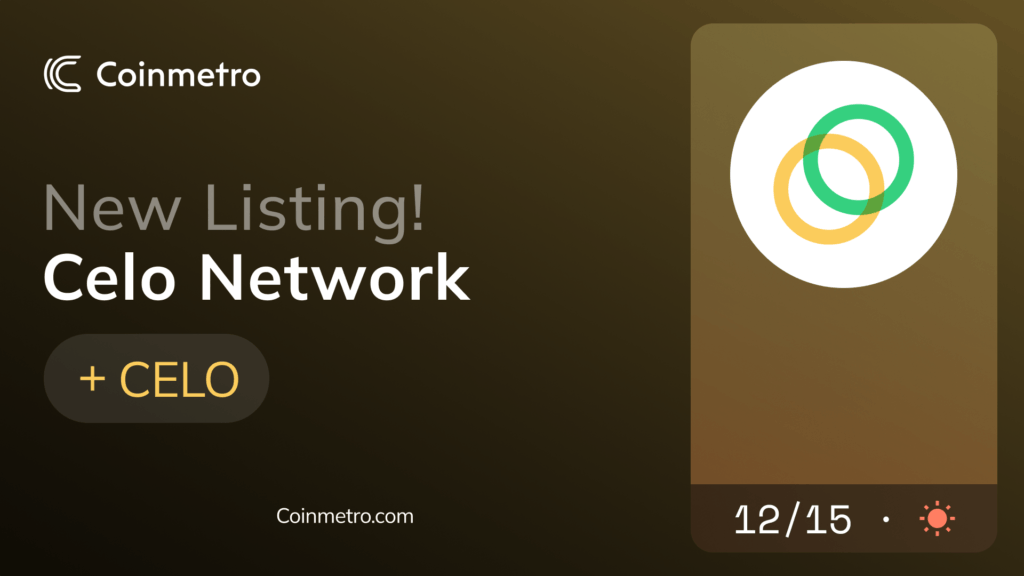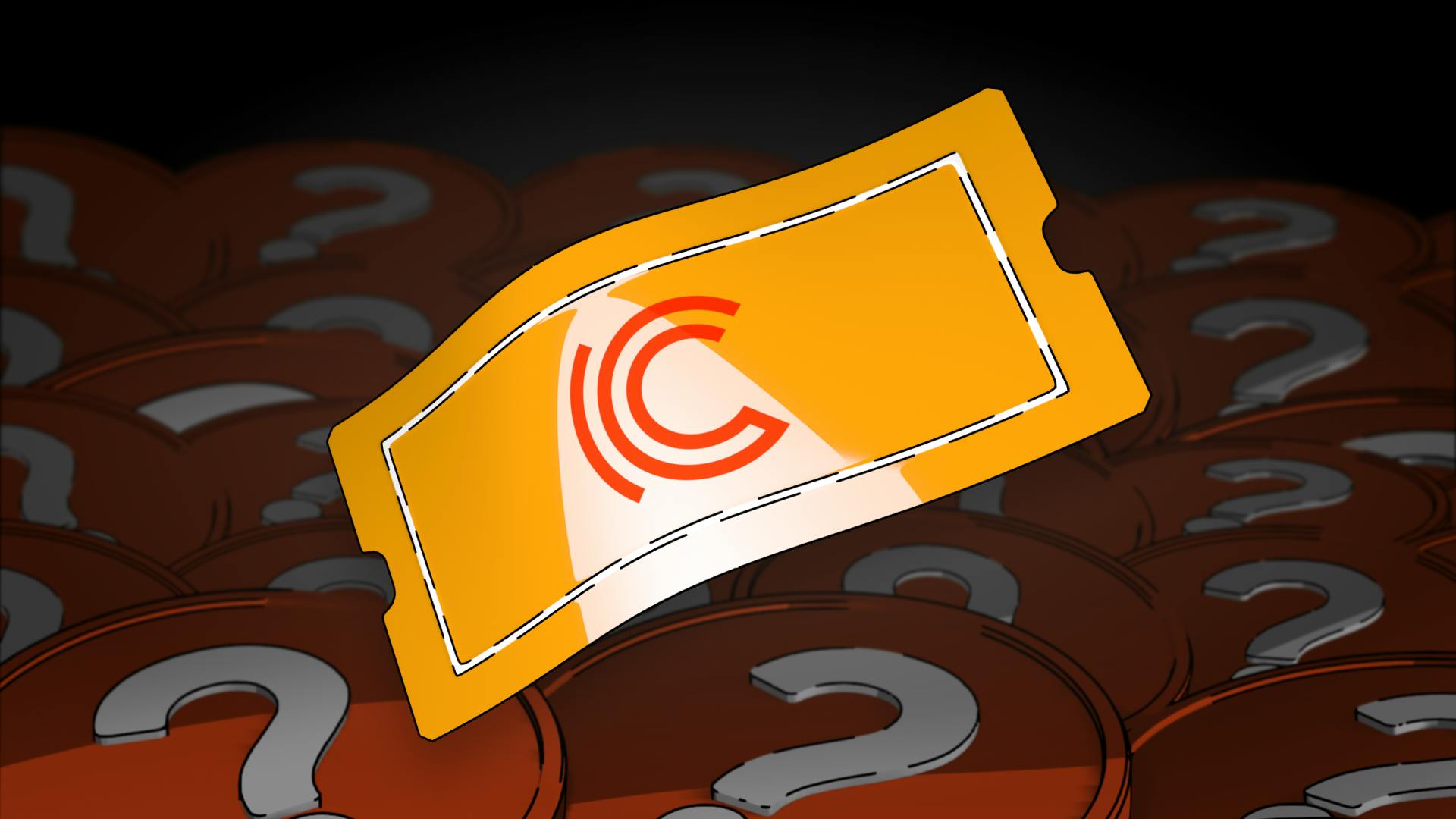CELO - Driving Mobile Crypto Adoption
17 de agosto de 2022

by Kamil S
17 de agosto de 2022
As we are edging closer to the end of our15 Weeks of Summer campaign, we are having once again a busy week with 4 new listings and other worthy features for you to integrate. Today we are listing CELO – a carbon-negative PoS blockchain network that wants to introduce crypto to all 6 billion mobile phones on this planet. CELO’s mission is to create a financial system that offers equal conditions for prosperity for everyone. This is something we, at Coinmetro, fully resonate with, so let’s find out more about the innovation and utility behind this project.
Celo network aims to break down barriers by bringing the powerful benefits of DeFi to all mobile phone users. The idea is for the Layer-1 protocol to allow users to onboard into the system with just their phone number. Making payments in the CELO network is as easy as sending a text message. Through an innovative decentralized address-based identity layer, the Celo network maps phone numbers and wallet addresses. Mobile participants play a role in securing the network and can earn rewards for doing so. Here are some of the strong points of the Celo network:
- Layer-1 Protocol – Allowing for highly scalable dApp building. By using a pBFT-based (practical Byzantine Fault Tolerance) PoS consensus protocol, Celo can process and achieve consensus on blocks extremely quickly.
- Proof-of-Stake – Celo secures its consensus mechanism with incentives for validators, groups and voters.
- Localized Stablecoins (CUSD, CEUR, CREAL) – A portfolio of user-friendly stablecoins, allowing users to trade digital assets and transfer value faster, cheaper, and more easily using their smartphones.
- Carbon Negative – Even though Celo greatly reduces carbon emissions by utilizing its innovative PoS consensus, the protocol goes further and includes a proposal for a Carbon Offsetting Fund to make the infrastructure of the Celo platform carbon-neutral. Simply put, Celo pays for planting trees that will offset its operation’s carbon footprint.
- Mobile-First Identity – Celo offers an identity layer that starts with a decentralized mapping of phone numbers to wallet addresses, allowing users to transact with one another via the most common identity scheme everyone is familiar with: their address book.
Celo introduces a multi-asset cryptographic protocol for decentralized social payments. Some of the biggest roadblocks to crypto’s large-scale adoption are ease of use and purchasing power volatility. The Celo protocol addresses these exact issues with an address-based encryption scheme and a stable-value asset.
The first application is a social payments system centered around mobile phones. For such a system to prosper, sending and receiving money should be as easy as sending a text message. Also – the volatility of the currency should be minimal. For this, the Celo protocol operates a cryptographic scheme called address-based encryption in which participants verify a series of cell-phone number-to-public-key mappings, allowing users to then use their friends’ cell phone numbers as public keys.
To address the stability of value, the Celo protocol introduces an asset with its value stabilized using a monetary policy with elastic supply rules, backed by a variable-value reserve. Moreover, it also introduces a governance structure allowing the protocol to create a family of local, regional and utility stable value currencies, where the introduction of new successful stable-value coins to the family strengthens the stability characteristics of the existing coins.
This might sound complex (and it is for sure!) but the results it brings to users are very simple to use and understand. Celo offers anybody with a smartphone the ability to instantly send and receive crypto payments and make use of stablecoins to fulfill these operations.
The mission driving Celo network forward is to make decentralized finance open for 6 billion smartphone users around the world. Several projects built on Celo are at the forefront of this idea:
- Ubeswap – A mobile-first DeFi exchange based on elements from Uniswap, Sushiswap, Synthetix, and Compound. The Ubeswap ecosystem can support as many existing tools and projects from the Ethereum ecosystem as possible. Ubeswap’s goal is to increase liquidity on Celo, offering a platform where anyone can trade any asset from their phone or browser, without having to rely on decades-old clearinghouse technology or other centralized systems.
- Moola Market – A non-custodial liquidity protocol that is democratizing access to yield and credit. Depositors earn compound interest which is paid for by borrowers who take over-collateralized loans, delegated loans, or flash loans.
- ImpactMarket – A decentralized poverty alleviation protocol enabling any vulnerable community to implement poverty alleviation mechanisms, like Unconditional Basic Income.
The Celo Protocol hosts many more DeFi projects and platforms that offer innovative financial products and creative solutions tailored for a better relationship with money. Take your time to learn more about the complex ecosystem by visiting the Celo website.
CELO is the native token of the PoS network and is used for transaction fees, governance participation and related activities. CELO has a max supply of 1 billion (1,000,000,000) tokens, out of which 600 million were available when the mainnet launched in April 2020.
The remaining 40% of the supply is progressively released via fees and rewards, and various vesting schedules. Additionally, up to 120 million CELO are going to a reserve designed to maintain the validity and price stability of CUSD. As a stablecoin, CUSD is a convenient payment method for Celo users who don’t have to worry about their holdings fluctuating in value.
Celo was founded in 2017 by a team of four: Rene Reinsberg, Marek Olszewski, Sep Kamvar and Marek Olszewski. At the time, Rene and Marek were executives at the web hosting firm GoDaddy. Sep was an MIT professor and Marek was working as a Google executive.
During the next 2-3 years, the newly established network managed to raise over $46.5 million by selling approximately 120 million CELO tokens in both private and public sales. Among the investors were venture capital firms a16z Crypto, General Catalyst and Social Capital.
Another week is passing us by and what a week it is! Alongside CELO, the Coinmetro exchange is also listing other great projects that you should know about: COMP (Compound), MKR (MakerDAO), LRC (Loopring), NMR (Numeraire). Be on the lookout for in-depth blogs about all listings and take your time to learn and get familiar with the projects! Also – check out some of the past weeks’ listings on these two blogs – DAI, MATIC, NOIA and NEAR, KSM.
We are excited to have pushed forward all summer long with some great partnerships and valuable assets. Which of those have captured your attention? Are you holding some in your portfolio?
Let us know on Coinmetro’s Discord and Telegram channels! To begin your trading and investing journey today, take action now and sign up for Coinmetro in just a few steps.
Artículos relacionados

🚀 Coinmetro Lista $WLFI
El impulso cripto en Estados Unidos nunca ha sido tan fuerte — y uno de los tokens más comentados de 2025 llega oficialmente a Coinmetro. Nos…
3m

🚀 Iniciativa de Listado Gratuito de Coinmetro: La Oportunidad de Brillar para Tu Proyecto
Coinmetro abre la puerta a proyectos cripto ambiciosos que están listos para dar el siguiente paso — con la posibilidad de ganar un listado gratuito…
3m

Actualización para usuarios del Reino Unido: nuevo modelo de tarifas de trading
Estamos introduciendo una estructura de tarifas actualizada para los usuarios del Reino Unido. A partir de ahora, Coinmetro ya no aplicará el sistema…
2m

LTO ha evolucionado — Bienvenido EQTY
Coinmetro ha completado oficialmente la migración de LTO → EQTY. Todos los saldos de LTO de los usuarios se han convertido automáticamente en una…
3m